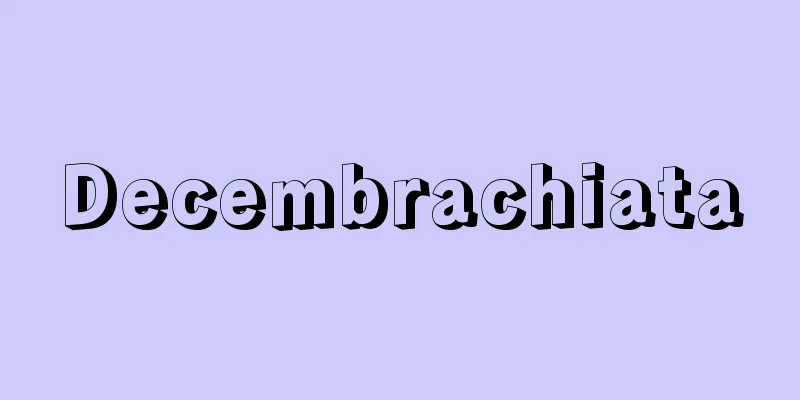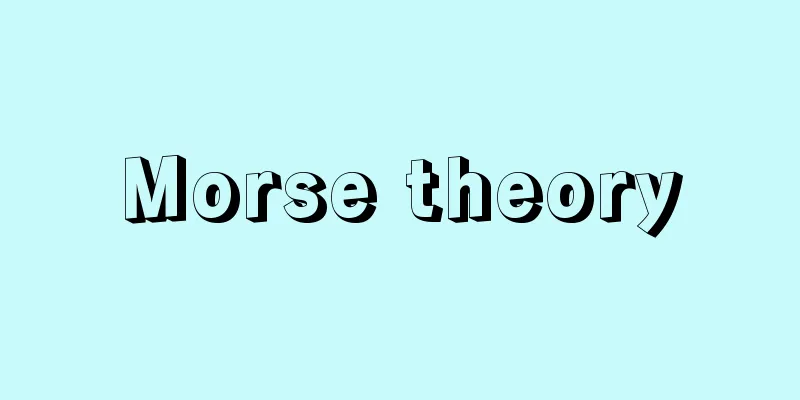Vegetation

|
A term in plant ecology. Used to describe a group of plants growing in a certain place, it is also called vegetation cover, vegetation covering, or vegetation community. Vegetation is described as lowland vegetation, alpine vegetation, coastal vegetation, waterside vegetation, etc., according to the terrain that has certain characteristics. When describing a group of plants as a physiognomic unit, it is also called forest vegetation, grassland vegetation, or moorland vegetation. When vegetation is classified according to some criteria and assigned units, it is called a plant community. The establishment of vegetation is controlled by environmental factors at various levels, as described below. Wide-area environmental factors include climatic factors such as temperature and precipitation. Generally, vegetation develops well in low-latitude areas with high temperatures and abundant precipitation, but develops poorly in high-latitude areas and inland areas with little precipitation. Local-level environmental factors include topographical factors such as topography, geology, and groundwater levels, and land factors such as soil and water quality. Taking the coast as an example, various vegetation types conditioned by topographical and land factors, such as sand dune vegetation, salt marsh vegetation, and cliff vegetation, exist within a small area. Biological factors include the regression and deviation of vegetation due to cannibalism by wild animals and livestock. However, it is human factors that have the greatest impact on vegetation. Looking at the long history of vegetation development, human destruction of vegetation has been widespread, extensive, and intense in an extremely short period of time. The destruction, alteration, and regression of vegetation continues to this day through large-scale land alteration such as deforestation, burning, grazing, and farmland reclamation, as well as road construction, river construction, and coastline landfill. [Shigetoshi Okuda] Natural and Compensatory VegetationVegetation can be divided into natural and vicarious vegetation depending on the degree of human influence. In theory, natural vegetation is vegetation that is completely unaffected by human influence, but in addition to alpine vegetation, coniferous forests in the subalpine zone and well-developed vegetation in lowland shrine forests are also treated as natural vegetation. Compensatory vegetation is natural vegetation that has been replaced by various artificial vegetation due to human influence, such as firewood and charcoal forests of sawtooth oak and konara oak in evergreen broadleaf forest areas, red pine plantations, silver grass grasslands, plantain communities on roads, and farmland weed communities with a lot of crabgrass. Vegetation that is subject to only minor human interference is sometimes treated separately as semi-natural vegetation. Vegetation is further classified based on the element of time, with the natural vegetation immediately prior to human influence being called the original vegetation, and the vegetation that currently exists in front of us being called the existing vegetation. Additionally, the theoretical vegetation that expresses the potential capabilities of an area in terms of natural vegetation if all current human influence were to cease is called potential natural vegetation. Because potential natural vegetation changes over time, when indicating potential natural vegetation, it must be strictly expressed as the current, or today's, potential natural vegetation at the time of the survey. Potential natural vegetation is estimated comprehensively based on various information and knowledge about vegetation. To study the vegetation of a certain area, first a phytosociological vegetation survey based on species composition is conducted by selecting typical vegetation for all vegetation types that grow in the area. The vegetation survey data obtained is then used to objectively extract vegetation units through indoor work that mainly involves table manipulation. An attempt is made to systematize all vegetation units based on similarities in species composition, and the relationships between plant communities within the area become clear. Furthermore, by mapping the vegetation of the communities, the current state of the vegetation in the area becomes clear. A record that covers all the plant communities in an area in this way is called a regional vegetation book, and with the recent rise in environmental issues, regional vegetation books are increasingly being compiled by local governments such as prefectures, cities, and towns. [Shigetoshi Okuda] Vegetation MapA vegetation map is a map that shows the specific extent of vegetation or plant communities that are classified according to type. There are different types of vegetation maps depending on the purpose and method of their creation. Existing vegetation maps are maps of vegetation that currently exists, and many of them are created as they are the most common way to know the current state of vegetation. In this case, the vegetation units shown in the legend are drawn based on the physiognomy of the community, dominant species, and species combinations, and sometimes land use patterns are also taken into account. Original vegetation restoration maps are theoretically restored and illustrated the original topography before human interference and the vegetation that existed on it, and are drawn at a relatively small scale with natural vegetation as the legend. Potential natural vegetation maps are theoretically estimated and illustrated the common potential that various existing vegetation has when human interference is eliminated, but the legend is shown in natural vegetation and is expressed in phytosociological vegetation units including communities and higher-level units. Vegetation mapping of potential natural vegetation takes into account not only existing natural vegetation, but also all vegetation, including secondary forests, remaining trees, and weed communities, but in areas with little remaining vegetation, it is also judged from land use patterns and soil profiles, etc. However, in areas that have been dramatically altered by housing development, coastal land reclamation, etc., it is often extremely difficult to estimate potential natural vegetation. Vegetation maps are not only the scientific achievements of phytosociology, but also serve as basic information for diagnosing the natural environment and for nature conservation and land use planning. Vegetation naturalness maps have been developed from existing vegetation maps, which classify vegetation units according to the degree of their difference from natural vegetation and show several levels of naturalness, usually 5 to 10 levels. In addition, there have been attempts to create site maps that show the quality and function of the site. [Shigetoshi Okuda] The meaning of vegetationVegetation plays a fundamental and important role as the only producer in the natural ecosystem and as a resource for preserving the genes of many living organisms. In addition, when considering the functions of vegetation, the most important are its role in mitigating weather conditions by providing wind and snow protection, preventing soil erosion, and preventing disasters by recharging water sources and purifying water. Furthermore, if vegetation is considered the sum of the various environments that have been given to us from the past to the present, it can also be used as a qualitative indicator of site diagnosis, especially of human influences such as environmental pollution. The need to conserve and create green spaces is increasing in response to the deterioration of the human living environment due to factors such as the concentration of population in cities and the expansion of industrial sites. To use green spaces appropriately and to green them correctly, it is necessary to have a correct understanding of vegetation, which coexists with humans and serves as the foundation of human life. The importance of vegetation can be understood when we consider it not simply as "green," but as a group of living organisms that produce, consume, and develop themselves, and as an indispensable coexistence for human life, such as environmental conservation green spaces within cities, buffer zones in times of disaster, green parks, and recreational areas. [Shigetoshi Okuda] "Vegetation of Japan," edited by Miyawaki Akira (1977, Gakken)" ▽ "Illustrated Vegetation of Japan," written by Numata Makoto and Iwase Toru (1975, Asakura Shoten)" ▽ "Atlas of Vegetation of Japan I: Forests," written by Nakanishi Satoshi, Oba Tatsuyuki, and others (1983, Hoikusha)" ▽ "Atlas of Vegetation of Japan II: Villages and Grasslands," written by Yano Satoshi, Hata Yoshio, and others (1983, Hoikusha)" ▽ "Revised Edition: Handbook of Vegetation of Japan," edited by Miyawaki Akira, Okuda Shigetoshi, and others (1983, Shibundo)" ▽ "Vegetation Communities and Their Lives," written by Iizuka Shigeru and Kikuchi Tago (1980, Tokai University Press)" Source: Shogakukan Encyclopedia Nipponica About Encyclopedia Nipponica Information | Legend |
|
植物生態学用語。ある場所に生育している植物の集団をまとめて表現する場合に用いられ、植被(植生被覆)、植衣、植群などともいう。植生はある決まった特徴を示す地形にあわせて低地植生、高山植生、海浜植生、水辺(すいへん)植生などと表現する。さらに相観的なまとまりとして植物集団を表現する場合には、森林植生、草原植生、荒原植生などともいう。また、植生をなんらかの規準によって類型化し、単位づけたときには植物群落とよぶ。 植生の成立は、以下に述べるようなさまざまなレベルの環境要因によって支配される。広域的な環境要因としては、気温、降水量などの気候要因があげられる。一般に気温が高く、降水量にも恵まれた低緯度地帯では植生はよく発達するが、高緯度地帯や、内陸部の寡雨地域などではその発達は悪くなる。局地的なレベルの環境要因としては、地形、地質、地下水位などの地形的要因と、土壌、水質などの土地的要因があげられる。海岸付近を例にとると、砂丘植生、塩沼地植生、断崖(だんがい)地植生などというように、地形・土地要因に条件づけられたさまざまな植生が狭い範囲の中に存在している。 生物要因としては、野生動物や家畜の吃食(きっしょく)による植生の退行や偏行があげられる。しかし、植生にもっとも強い影響を与えるのは人為的要因である。植生の発達の長い歴史からみれば、人類の植生破壊はきわめて短期間に、広範囲に、かつ激しく行われてきている。森林伐採、火入れ、放牧、田畑の開墾、さらには道路造成、河川工事、海岸線の埋立てなどの大規模な土地改変によって、植生の破壊、変質、退行は現在も続けられている。 [奥田重俊] 自然植生と代償植生植生は人為的な影響の程度によって、自然植生と代償植生に分けられる。自然植生は理論的には人為的影響をまったく受けない植生をいうが、高山植生のほか、亜高山帯の針葉樹林、低地のよく発達した社寺林の植生なども自然植生として扱われる。代償植生とは、自然植生が人間の影響によってさまざまな人為植生に置き換わったもので、たとえば常緑広葉樹林域でのクヌギやコナラの薪炭(しんたん)林のほか、アカマツ植林、ススキ草原、路上のオオバコ群落、メヒシバの多い畑地雑草群落などがあげられる。なお、人間の干渉の緩やかな植生の場合は、半自然植生として別に扱われることもある。 植生はさらに時間の要素をもとに、人間が影響を及ぼす直前の自然植生を原植生とよび、現在目前に存在する植生を現存植生とよぶ。また、現在の人為的な影響をいっさい停止した場合、その立地のもつ潜在的な能力を自然植生で表現した理論的な植生を潜在自然植生という。潜在自然植生は時間とともに変化するものであるから、潜在自然植生を示すときは、その調査時点で、現在の、または今日の潜在自然植生と厳密に表現しなければならない。潜在自然植生の推定は植生に関するさまざまな情報や知見などをもとに総合的に行われる。 ある地域の植生を調べるためには、まず、地域内に生育するすべての植生型に対し、典型的な植分を選定して種組成に基礎を置く植物社会学的な植生調査を行う。得られた植生調査資料は、表操作を主とする室内作業によって客観的に植生単位を抽出する。すべての植生単位は種組成の類似性によって植生体系化が試みられ、地域内における植物群落相互の関係が明らかになる。さらに群落の植生図化によって、地域の植生の現状が明瞭(めいりょう)となる。このように、一地域の植物群落をすべて網羅し、記録したものを地域植生誌とよぶが、最近の環境問題の高まりとともに、一地方、または県市町などの自治体による地域植生誌が盛んに作成されるようになってきている。 [奥田重俊] 植生図植生、または類型化によって単位づけられた植物群落の具体的な広がりを地図化したものを植生図という。植生図は作製の目的や方法によって種類が異なる。現存植生図は現在存在している植生についての地図であり、植生の現況を知るうえでもっとも一般的な植生図として数多く作製されている。この場合、凡例として表現する植生単位は、群落の相観や優占種、種の組合せをもとにした群集などによって描かれ、ときに土地利用形態も加味される。原植生復原図は、人為的干渉の及ぶ以前の原地形と、そのうえに成立していた植生を理論的に復原して図示したもので、自然植生を凡例とし、比較的小縮尺で描かれる。潜在自然植生図は、現存するさまざまな植生が人為的干渉を排したときに共通してもつ潜在能力を理論的に推定して図示するが、凡例は自然植生で示され、しかも、群集または上級単位を含む植物社会学的な植生単位で表現される。潜在自然植生の植生図化は、現存の自然植生はもとより、二次林や残存木、雑草群落などすべての植生を手掛りとするが、残存する植生の少ない地域では、土地利用形態や土壌断面などからも判定される。しかし、宅地造成、湾岸埋立てなどの立地の改変の激しい地域では、潜在自然植生の推定がきわめて困難な場合も多い。 植生図は、植物社会学の科学的な成果であるばかりではなく、自然環境の診断、自然保護や国土利用計画に対し、基礎的な資料として役だてられている。現存植生図から転化されたものとして植生自然度図があるが、これは植生単位を自然植生からの隔たりの度合いによって区分し、自然性の高低にいくつかの段階づけを行って示した図であり、普通、5~10段階に分けられる。このほか、立地の質や機能を図化した立地図の作製なども試みられている。 [奥田重俊] 植生がもつ意味植生は自然界における生態系のなかでの唯一の生産者として、また、多数の生物の遺伝子保存の資源として、もっとも基本的で重要な役割を演じている。また、植生の機能を考えると、防風、防雪などにみられる気象の緩和、土砂流出の防止、水源涵養(かんよう)や水質浄化作用などの災害防止機能などがもっとも重要なものといえる。さらに、植生を過去から現在までに与えられたさまざまな環境の総和とみなすならば、立地診断、とくに環境汚染などの人為的影響の質的指標とすることもできる。 都市への人口の集中化、産業立地の拡大などの人間生活環境の悪化に対し、緑地の保全、形成の必要性が高まっている。緑地の適正な利用や正しい緑化を行うにあたっては、人間の共存者であり、人間の生活基盤を担う植生の正しい理解が必要である。植生が単なる「緑」ではなく、それ自身が生産し、消費し、発達する生き物の集団として都市内の環境保全緑地や災害時の緩衝地、あるいは公園緑地、レクリエーション・エリアなど、人間生活に必要不可欠な共存者としてみたときに、植生の重要性が理解されよう。 [奥田重俊] 『宮脇昭編『日本の植生』(1977・学習研究社)』▽『沼田真・岩瀬徹著『図説・日本の植生』(1975・朝倉書店)』▽『中西哲・大場達之他著『日本の植生図鑑Ⅰ 森林』(1983・保育社)』▽『矢野悟道・波田善夫他著『日本の植生図鑑Ⅱ 人里・草原』(1983・保育社)』▽『宮脇昭・奥田重俊他編『改訂版・日本植生便覧』(1983・至文堂)』▽『飯塚茂・菊池多賀夫著『植生群落とその生活』(1980・東海大学出版会)』 出典 小学館 日本大百科全書(ニッポニカ)日本大百科全書(ニッポニカ)について 情報 | 凡例 |
Recommend
barbe
…In the 14th century, there was a hood called a w...
Reptilia
...The oldest of this group is the Placodermi, wh...
Round Chair
...The word "Kyokuko" is an abbreviatio...
cold-type
...When the printed photosensitive material is de...
Quito (English spelling)
The capital of Ecuador. Its official name is Villa...
Cold wave - Kanpa
A phenomenon that mainly occurs in winter, in whi...
Academic city - gakujutsushi
...Cities related to the flow of goods. (3) Consu...
Chita [city] - Chita
A city in the northwest of Chita Peninsula, Aichi ...
Zwinger Palace - Zwinger Palace
Zwinger is a late Baroque palace in the old town o...
House spider - Ietanagumo
A medium-sized spider belonging to the Arthropoda...
Artyom, FA - Artyom
…It was established as a mining village in 1924, ...
Tunxi - Tunxi
A municipal district in Huangshan City in the sou...
Sacco, N. (English spelling)
...A famous case in the history of American trial...
Matisse
French painter. Born in Le Cateau-Cambrésis in nor...
Chiba Tsunetane
Year of death: 24th March 1st of the Kennin Era (2...









